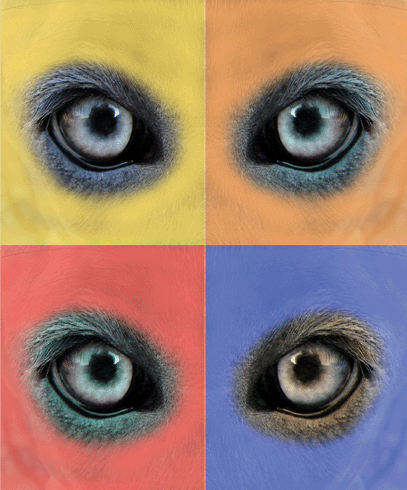 | 1.
HYPOCATALASIA What is Hypocatalasia? Hypocatalasia is the deficiency of an enzyme called catalase in red blood cells. The catalase enzyme plays an important role in the cells defense against a type of chemical damage, known as oxidative damage. The disorder is characterized by ulcers and progressive gangrene (tissue death) of the mouth. Age of Onset is 0 to 2 yrs.
This is a disorder discovered in Beagles. Beagles were used in the make-up of the Rat Terrier breed. The American Hairless Terrier is a mutation which occurred from Rat Terriers. Hypocatalasia is also found in the AHT breed.
Inheritance is Autosomal Recessive. For autosomal recessive disorders, dogs with two copies of the variant are at risk of developing the condition. Dogs with one copy of the variant are called carriers, and although they are not at risk for development of the disorder, they may pass the disease variant on to their puppies if bred.
Likelihood of the Condition – Moderate. At risk dogs (carry 2 copies of the gene) may show signs of this disease in their lifetime, although some will not develop the condition due to absence of additional risk factors. |
| 296 Visits
1 Images
Shared Album | |
|
 |
|
 | 3.
PRIMARY LENS LUXATION IN RAT TERRIERS Rat Terrier breeders and owners need to be aware of an eye issue that was recently discovered in the Rat Terrier breed. It is an issue that has lurked unknowingly in the breed for many years. The good news is, as of October 2009, an invaluable “test” became available to find the DNA marker for Primary Lens Luxation. When selecting a Rat Terrier, ask for PROOF of their testing results. If the dogs’ parents have not been tested or proof is withheld … RUN.
WHAT IS PLL? Primary Lens Luxation is the dislocation or displacement of the lens within the eye. The lens is the clear structure in the eye, consisting of two rounded or convex surfaces, that focuses light rays to form an image onto the retina. Normally the lens is suspended between the iris (the colored portion of the eye) and the vitreous (the clear gel in the back of the eye), and is held in place by small fibers called zonules or suspensory ligaments. Should the zonules break, the lens can either become partially dislocated (subluxated) from its normal position or completely dislocated (luxated). When the lens detaches and falls forward into the anterior chamber in front of the pupil, it is called an Anterior Luxation. When it falls back into the rear portion of the eye, it is called a Posterior Luxation.
CAN PLL OCCUR IN AMERICAN HAIRLESS TERRIERS? Yes it can. Testing is recommended. PROOF of testing when buying a puppy or dog is recommended.
HOW DOES A DOG GET IT? Primary Lens Luxation is an inherited disorder in which the zonules or suspensory fibers degenerate. The condition occurs mainly in the terrier breeds, namely the Parson Russell Terrier, Tibetan Terrier, Smooth Fox Terrier and Rat Terrier. Primary luxations are also seen in the Border Collie, the Australian Cattle dog (blue heeler), and sporadically in other breeds. Although the underlying reasons for the lens luxation are not well understood, inflammation or a defect in the zonules may play a role. With primary lens luxation, both eyes are prone to dislocation of the lens.
HOW CAN I TEST MY DOG? Before October 15, 2009 there was NO test for PLL. Through the partnership of the University of Missouri College of Veterinary Medicine and OFA (Orthopedic Foundation for Animals), there is NOW a DNA test for this mutation. The cost is $65.
HOW IS THE TEST PERFORMED? A Test Kit will include a cheek swab and DNA marker card with instructions how to perform this simple test. The inside of the dog’s mouth/cheek is swabbed to collect cells and saliva. Then the saliva is spread onto the card. The card is sent to OFA.
WHAT WILL THE TEST REVEAL? The DNA test results will categorize dogs as follows: Affected, Carrier, or Normal/Clear
AFFECTED: This finding indicates that TWO copies of the disease gene are present in the dog. Unfortunately, the dog will be medically Affected by the disease. Appropriate treatment should be pursued by consulting a veterinarian. An AFFECTED dog will have 2 mutated copies of the gene. The vast majority of these dogs will luxate at 4-8yrs of age, the typical age of onset for PLL. There were a few dogs in the study group that tested as AFFECTED but did not luxate until after 8 yrs of age, and some dogs testing AFFECTED have died from other causes without luxating. A search of published veterinary literature revealed that about 10% of the dogs reported to be clinically Affected with PLL had onset of symptoms after 8 yrs of age. Because of this, the test results will say “AFFECTED/HIGH RISK.
CARRIER: This finding indicates that ONE copy of the disease gene is present in your dog, but that it will not exhibit disease symptoms. Carriers will not have medical problems as a result. Dogs with Carrier status can be enjoyed without the fear of developing medical problems but will pass on the disease gene 50% of the time. Carriers have one normal and one mutated copy of the gene. They could pass either the normal copy or the mutated copy on to their offspring. Because there were very few cases of dogs in the research groups testing CARRIER who did appear to have PLL, the test results will say “CARRIER/LOW RISK.
NORMAL: This finding indicates that the GENE IS NOT PRESENT in your dog. Therefore, when used for breeding, a Clear dog will not pass on the disease gene. A dog testing NORMAL has 2 normal copies of the gene, is not at risk for developing PLL, and can only pass a normal copy of the gene to any offspring. Some sites use the word Normal or Clear. Both these words mean the same thing. It means that the dog in question is NOT a Carrier nor is it Affected.
CLEAR BY PARENTAGE (CBP): You may see health clearances with the wording "Cleared By Parentage" or "CBP" on breeder sites. This means both sire and dam are proven Normal/Clear and that pair bred together can never produce an Affected or a Carrier. Some sites use the word Normal or Clear. Both these words mean the same thing. It means that the dog in question is NOT a Carrier nor is it Affected.
RECOMMENDED READING
Canine Lens Luxation Basics
About the PLL Test
Orthopedic Foundation for Animals (OFA)
American Rat Terrier Association
|
| 4482 Visits
6 Images
Gallery Album | |
| |